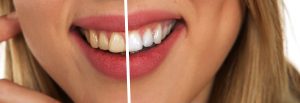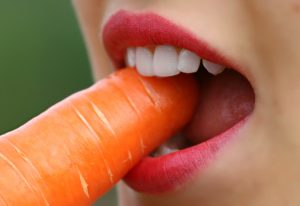Cavity vs stain in teeth may look like similar oral issues to you, but they are indeed distinct. While both deteriorate our oral health, they have different ways to do so.
Maintaining good oral health and hygiene is very important to have long-lasting teeth. But sometimes, even after taking utmost care, there are chances that you experience discoloration.
Looking at a tooth stain might not help you determine what it is and why it happened. The onset of cavities can cause dark and light spots that you mistake as a stain and vice versa.
Having cavities damages your teeth permanently on their surface. As it eventually moves towards tooth decay, early rectification can help you maintain tooth health.
Tooth decay gradually becomes deeper and bigger, creating a hole that destroy it. The worst part? Cavity can spread and impact other teeth.
However, stains happen due to deposits from food and require yearly or biyearly scaling. Maintaining a healthy teeth cleaning routine can also reduce stains.
Table of Contents
Cavity vs stain
We will discuss cavity vs stain in detail and include preventive measures, treatment, and causes separately.
Cavity
A tooth decay or cavity happens when your tooth enamel starts getting damaged. Essentially it is a tiny opening in your tooth.
Initially, it may look like a tiny white spot and gradually progress into a bigger brown, black, or grey opening with time.
The formation of a cavity in your tooth is because of plaque. Plague creates a sticky film on your gums and teeth top.
The bacteria found in plaque feed on the acids and sugar in the food you eat. The protective coating of teeth is slowly eaten away by this plaque bacteria.
If you don’t address the damage immediately, it will eventually reach the tooth’s inner and middle parts. The end of the tooth’s nerve is located right inside of your tooth, which may cause you pain and sensitivity. Eventually, you may also have to go through a root canal.
Stain
Like cavities, a stain may not become tooth decay and is not something to be scared about. Stain is a type of discoloration. It may be embarrassing but not life-threatening.
Dental stains are classified into two types: extrinsic and intrinsic. Discoloration of the outermost layer, i.e., the enamel, is called an extrinsic stain. The discoloration of the dentin, i.e., the middle layer, is known as intrinsic.
In general, the stains might need the help of a dentist to return to their natural color.

Causes of a cavity
Cavity vs stain causes also differ from each other. The main causes of a cavity are excessive sugar and poor dental hygiene. But the good news is that you can prevent cavity and plaque bacteria from tooth destruction by simply flossing and brushing.
Brushing twice a day, along with flossing, can prevent plaque formation. Let us check out some of the reasons that cause cavity:
Plaque formation
Dental plaque has a sticky film that coats the teeth. Plaque bacteria is the main cause of cavities that feed on every starchy and sugary food you consume. This bacterium erodes your tooth enamel.
The enamel erosion may progress into your inner and middle layers if you don’t address them in time. Eating excessive starchy and sugary food is the main cause of cavity formation.
When you don’t clean your teeth well after eating, then bacteria start feeding on the leftovers. It leads to plaque formation in your mouth and attacks the teeth. The process harden the area above or under the gum line known as calculus or tartar. Tartar is the bacteria shield that makes plaque removal hard.
Genetics
As unfortunate as hair loss, cavity can be a genetic disorder. Imagine never indulging in sugary food but still finding cavity in teeth.
Like your genes determine teeth development and how strong your enamel is in fighting bacteria, there are chances of having cavity due to poor oral health amidst family members.
Luckily, one can avoid tooth decay with a good dental hygiene routine.
Causes of stain
As discussed, there are two types of stains extrinsic and intrinsic. Extrinsic stain happen from the beverages we regularly consume, like tea, coffee, berries and even red wine. Along with that, smoking, tobacco, tar and other nicotine-based products trigger the formation.
Whereas intrinsic stain, also known as dentin, is caused due to condition called demineralization. In demineralization, your teeth lose their vital minerals. The intrinsic stain has no connection with your food habits.
Below are a few reasons for tooth stains:
Bad dental hygiene
If you have a habit of forgetting to floss or brush, you may end up staining your teeth, which you don’t want.
Age
Your age is a factor for teeth discoloration. With age, your tooth enamel also tends to wear away, which makes the dentin of your teeth visible, which is naturally creamy in color.
Diseases
If you have some condition where you cannot generate the enamel and dentin in your teeth, it may lead to discoloration.
Environment
Too much fluoride is bad for your tooth and the environment plays a major role in this. If the water you use for washing and drinking has too many fluoride, it can stain your teeth. Also, beware of the toothpaste and rinses you use. Some might also have a high level of fluorides.
Trauma
As a child, if you have gone through any form of oral damage, it might negatively impact you today. For example, severe injury due to playing might disturb the natural enamel formation and lead to stains. Excessive blood loss from sports injury can also decrease the blood flow to your tooth, causing a stain.

Cavity treatment
Once you understand cavity vs stain thoroughly, you will realize that their treatments also differ like their condition. Below are the treatments that are done for treating cavities:
Fluoride
Applying fluoride to cure your cavity in the initial stages may not be as fruitful as expected. It might reverse the situation by restoring the enamel.
Fillings
Restorations or fillings are common in treating cavities that progress from the initial stage. This treatment consists of different materials, including composite porcelain or resins. Your dentist is the best person to decide what suits you the best.
Crowns
You may have to replace a damaged crown with a custom-made one if you find them weaken. In this process, the dentist removes the damaged area and puts up the customed crown. Crowns are strong, hardy porcelain or resin-fused to other materials or metals.
Root canal
If the cavity has gone into the inner part of your tooth, known as the pulp, then root canalling may be prescribed to repair your damaged tooth rather than extracting it. While doing your root canal, the damaged pulp may be replaced and removed using a filling. Post the root canal, the dentist may prescribe medication to clear any lingering infection.

Extractions
If your teeth are extremely damaged and decayed, you might have to do an extraction. If you don’t get it removed, then it can even cause more damage by spreading the teeth next to it. It is best to check with your dentist on the replacement process.
Stain treatment
Treating stains can be an easier task to do than treating cavities.
There are many teeth whitening products and washes that you can use for discoloration. Depending on your stain, your doctor may ask you to use some whitening gel and strips.
Your genes play a major role in causing stains as well. If your family has a whiter and thicker enamel background, you may get stained teeth.
These strips and gels have agents which can remove the stains but sometimes create side effects like irritation and sensitivity. It is best to use authenticated and approved products if you want to use them at home. However, if you fantasize about having a brighter white smile, you can also go for professional whitening procedures.
This procedure may involve applying protective gel and a whitening formula to your beautiful teeth. And voila! Welcome your brighter wider smile.
To give you a satisfactory experience they may use special lighting. Make sure you check the result with normal lighting as well.
How to prevent cavity?
Cavity vs stain has different ways of prevention. Find out what works for cavity treatment followed by stain.
Fluoride toothpaste:
Brushing with fluoride after drinking or eating at least 2 times a day is a great way to prevent cavities. Cleaning your teeth using an interdental cleaner will also keep cavity at bay.
Rinsing your mouth frequently
If you have a higher risk of contracting cavities, your dentist may also prescribe a fluoride mouthwash.
Regular dentist visits
Visiting your dentist is very important. Get professional oral exams and teeth cleanings to prevent any dental issues. You need to ensure you have a schedule to follow regularly for healthy dental health.
Here are things your dentist might recommend you to go through:
Dental sealants
This is a protective sealant like a protective plastic coating on the chewing surface of back teeth. It seals off grooves and crannies that collect food, protecting tooth enamel from plaque and acid. The Centers for Disease Control and Prevention (CDC) also suggests sealants for the school-age group. Sealants last a long time but must be checked at frequent intervals.
Drink tap water
The tap water you see at public water taps has already added fluoride, which helps reduce tooth decay. The benefits easily available in tap water can greatly help, and you should consider having it frequently.
Avoid frequent sipping and snacking
It is better to avoid sipping and snacking frequently as the bacteria start attacking the moment you eat. Snacking throughout the day can put your teeth under continuous attack, making them prone to the cavity.
How to prevent stain?
Coffee, colas, tea, smoke, certain medications, acidic juices, and some pigmented foods can harm your white teeth. Though having white teeth for a lifetime happens only in movies, in reality, with age and time, you will lose teeth whiteness.
Over time, the enamel of your teeth will erode and crack, expose the dentin, and make the teeth weak. However, tooth stains can be prevented by doing a few common practices. Let’s find out what those are:
Rinsing and brushing
Regularly brushing and rinsing after every meal is the best way to deal with stains and discoloration. Suppose you cannot brush, at least after every meal, gulp water and swig it. This will make your mouth free from food particles and prevent staining.
Using an electric brush
Electronic toothbrushes are great for cleaning your teeth. Some advanced brushes also come with a water sprayer that helps in plaque removal.
Using a mouthwash
You need to use a mouthwash that has antibacterial qualities to reduce stains and catch plaque. Many whitening types of mouthwash are available by Listerine and Crest, which can help a lot.
Whitening toothpaste
Like mouthwashes, whitening toothpaste is also available to help remove stains and plaque. These toothpastes may contain gritty abrasives, which could erode your tooth enamel. But now manufacturers have better products with peroxide, which gives a better result.

Final thoughts
Now that you have come to the end of this article, I hope you can differentiate cavity vs stain. Moreover, now you can prevent it and also treat it when required.

